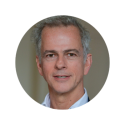Conversely, a return of 47.9 per cent in 2012/13, which was achieved when most developing market funds were still having to grind out returns, shows that the trust can produce returns well in excess of peers’ on certain occasions.
Fund firms’ emerging market teams tend to focus on one particular style of investing, with individual portfolios often differing only in terms of the size of investable companies. Even then, as Table 1 shows, there is plenty of doubling up when it comes to performance.
Changing construction
In truth, most leading emerging market funds are rather different to the developing market funds of yesteryear.
Many of those were focused on Brazil, Russia, India and China – the Bric countries – almost to the exclusion of other regions. In local currency terms, Brazil has led the way in the recent rebound, posting a 72 per cent return since the start of 2016.
India, which performed better than most during the tougher times since 2010, has become the quartet’s laggard with a return of 25.5 per cent.
Best and worst performers
But with Brazil, Russia and China all having suffered serious drawdowns over the past half-decade, the typical emerging market portfolio is more diverse than it once was.
There are two caveats to this, both of which have to do with index weightings. The first is that many funds do still retain significant exposures to the Brics.
The second-best fund in Table 1, Hermes Global Emerging Markets, holds more than 45 per cent of its portfolio in China, Hong Kong and Taiwan.
However, these regions account for 41 per cent of the MSCI Emerging Markets index, meaning that this overweight is not as significant as it may first appear.
The second caveat is that a broader emerging market focus has only served to highlight some of the flaws in index construction.
The MSCI index is home to countries ranging from Greece – since its downgrade in 2013 – to those that are in many ways too economically developed to be classed as “emerging”, such as South Korea.
Investors who are tracking these indices will have a level of diversity built in to their portfolio holdings. Alternatively, those who opt for active funds may benefit from a more independent approach to developing market investing.





